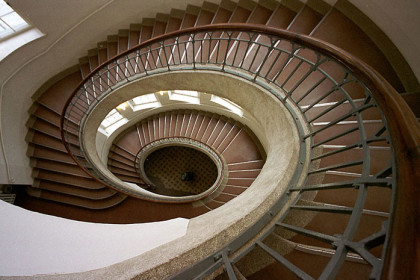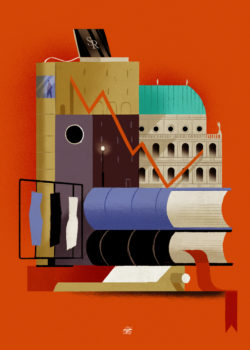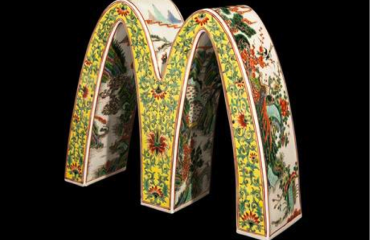
Van de Velde Henry Clemens, known as Henry Van de Velde, was born in Belgium in Antwerp in 1863 and died in Switzerland in 1957. He studied painting, but his admiration for Ruskin, Morris and Voysey shifted him to design; a man of many talents, he believed in the symbiosis between the arts, whether it was the design of a building or a room, the style of clothing or jewelry, or the form of everyday objects. Architect, sculptor painter and designer, he was immediately considered founder, along with Victor Horta, of the Art Nouveau movement.
Inspired by the already known English Arts and Crafts movement of William Morris, he opposed the dominant style of the Victorian revival and industrial design: real cornerstone of Art Nouveau is his home in Uccle, near Brussels, the success of which brought him a lot of work, and among his most significant highlight the décor of the Maison de l’Art Nouveau, art shop in Paris, and the Folkwang Museum in Hagen, Germany. He also founded several art schools in Germany and Belgium.
Especially he left in Weimar, Thuringia (where he arrived in 1902 as artistic consultant of the Grand Duke) a precious heritage, emphasized on the occasion of the celebrations for the 150 years from his birth. The fifteen years in Weimar were perhaps the most intense and productive of his artistic life: the famous School of Art and the School of Applied Arts, used in 1919 by the School of Bauhaus and now owned by Bauhaus University, are included in the UNESCO world heritage list since 1996.
Besides the buildings already mentioned, Weimar offers visitors many other remarkable places linked to the architect, as the Nietzche Archive, and the “Hohe Pappeln” country house that Van de Velde built for his family once it was made up of seven persons, of which you can visit both the garden and the interior, the furniture on display were designed by Van de Velde in 1904 for the family von Münchhausen.
On the occasion of the celebrations, students of the University will provide information on the buildings highlighting the features of special interest.
Henry Van de Velde believed that ugliness corrupts the eyes and also corrupts heart and mind, theorizing a reform of society through design. Perhaps his vision was utopian, but it has given rise to masterpieces which still nourish the eyes and soul.
Some exhibitions:
‘Passion, function and beauty’. Henry van de Velde’s contribution to European Modernism’
Neues Museum in Weimar. 24 March – 23 June 2013
‘The architect Henry van de Velde’
Bauhaus-Universität Weimar 29 March to 12 May 2013
 English
English  Italiano
Italiano 



